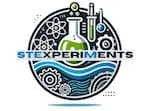Table of contents
Work Package 2
Building Pedagogical Pillars
Specific objectives
The specific objectives are tightly connected with the planned activities inside the other work packages. The main goal will be to prepare the theoretical basis for the next step of the project (research and educational activities). We will prepare pedagogical pillars and the main framework for experience-oriented and experiment-based STEM education. It will be the first step in preparing our main project outputs. We plan to start with desk research focused on a background literature review of hands-on and virtual experiments used in STEAM-oriented projects. As the next step, we will make an analysis of the literature concerning active learning, creative thinking, real-world applications, fostering digital readiness, and resilience in STEM education. In WP2 we will close with systematic searching for applicable assessment and evaluation tools The main contribution to the general objective will be the review of theoretical starting points for preparing suitable experiments and the preparation of a robust and effective pedagogical framework for experience-oriented and experiment-based
Results
The main results of the WP2 include two important literature reviews:
- a background literature review of real (hands-on) and virtual experiments used in STEAM-oriented projects or inquiry activities;
- the analysis of the literature on active learning, creative thinking, and real-world applications, fostering digital readiness and resilience in STEM education. The analysis will focus on the key principles, strategies, and techniques that are effective in promoting these skills and abilities in students. Searching for applicable assessment and evaluation tools will help to ensure that the pedagogical approach developed is effective in meeting the objectives of enhancing STEM education.
Activities
Background literature review of real (hands-on) and virtual experiments used in STEAM oriented projects or inquiry activities (Desk Research)
Background literature review of real (hands-on) and virtual experiments’ use in STEAM-oriented projects or inquiry activities: The activity involves conducting a review of literature on the use of real and virtual experiments in STEAM projects. The review will cover a range of topics, including the benefits of hands-on learning, the effectiveness of virtual experiments, the impact of STEAM projects on student engagement and learning outcomes, and the best practices for integrating experiments into STEM education. The review will involve analyzing qualitative and quantitative studies, and case studies (reports) from educational organizations.
Analysis literature with respect to active learning, creative thinking, real-world applications, fostering digital readiness and resilience in STEM education
Analysing literature concerning active learning, creative thinking, and real-world applications, fostering digital readiness and resilience in STEM education: The activity involves analysing the literature on active learning, creative thinking, and real-world applications, fostering digital readiness and resilience in STEM education. The analysis will focus on the key principles, strategies, and techniques that are effective in promoting these skills and abilities in students.
The activity will involve examining the ways in which active learning, creative thinking, real-world applications, digitalreadiness, and resilience can be integrated into STEAM education.
Searching for applicable assessment and evaluation tools
The activity involves searching for and identifying applicable assessment, and evaluation tools that can be used to measure the effectiveness of STEAM-oriented projects. The search will include assessment and evaluation tools that have been developed and validated for use in STEM education. The tools will be evaluated for their reliability, validity, and appropriateness for use in measuring the various learning outcomes associated with STEAM-oriented projects. The activity will involve selecting and adapting the most appropriate assessment and evaluation tools to be used in the project.
